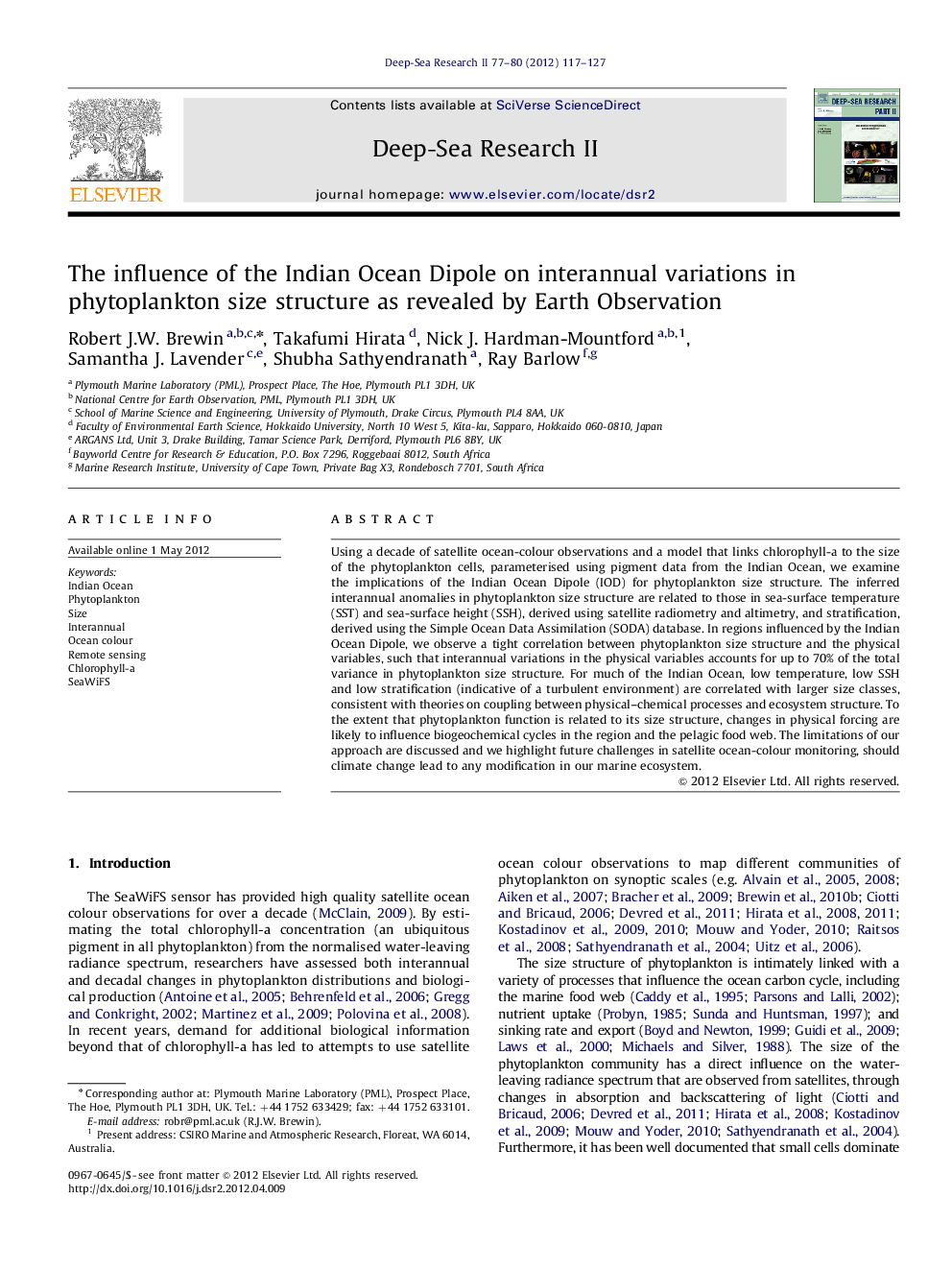| Article ID | Journal | Published Year | Pages | File Type |
|---|---|---|---|---|
| 4536705 | Deep Sea Research Part II: Topical Studies in Oceanography | 2012 | 11 Pages |
Using a decade of satellite ocean-colour observations and a model that links chlorophyll-a to the size of the phytoplankton cells, parameterised using pigment data from the Indian Ocean, we examine the implications of the Indian Ocean Dipole (IOD) for phytoplankton size structure. The inferred interannual anomalies in phytoplankton size structure are related to those in sea-surface temperature (SST) and sea-surface height (SSH), derived using satellite radiometry and altimetry, and stratification, derived using the Simple Ocean Data Assimilation (SODA) database. In regions influenced by the Indian Ocean Dipole, we observe a tight correlation between phytoplankton size structure and the physical variables, such that interannual variations in the physical variables accounts for up to 70% of the total variance in phytoplankton size structure. For much of the Indian Ocean, low temperature, low SSH and low stratification (indicative of a turbulent environment) are correlated with larger size classes, consistent with theories on coupling between physical–chemical processes and ecosystem structure. To the extent that phytoplankton function is related to its size structure, changes in physical forcing are likely to influence biogeochemical cycles in the region and the pelagic food web. The limitations of our approach are discussed and we highlight future challenges in satellite ocean-colour monitoring, should climate change lead to any modification in our marine ecosystem.
